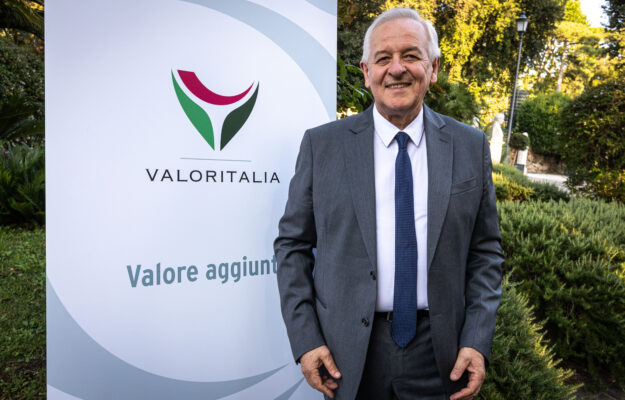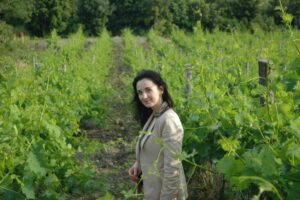“The 2023 harvest will definitely be lower, production-wise, than the 2022 harvest, there is no doubt about that. We can assume an average of -15/-20%, then there will be situations where we will do -5% and others where we will do -50%, there are areas like central Italy that have suffered more, others like Lombardy, Veneto, Trentino, have saved themselves a little bit more, but surely the production will be lower than normal. There is no doubt about that. But we must always remember that these are estimates that are made, and they are valid for today, because everything can change quickly”. Thus, to WineNews, Giuseppe Liberatore, managing director of Valoritalia, the largest certifying body for Italian wine, which alone certifies more than 56% of Italy’s PDO and PGI wine. And with whom we talked about grape harvests, numbers, controls, but also production and supply management policies, such as those of France, which, if on the one hand, has put in place 200 million euros, between EU and national funds, for crisis distillation to eliminate part of the surplus and maintain the value of the wine (which, on average, is more than double, per liter, of the Italian one), has, on the other hand, also kicked off a plan of explanting 9,500 hectares in Bordeaux, and is thinking about funds to convert part of the vineyards back to other crops.
“Surely it is a complex harvest, we find ourselves in a very particular situation: often”, Liberatore points out, “we find ourselves talking about large areas, even whole regions, with more or less homogeneous situations. Today, on the other hand, there are many diversities even within the same company, where productive vineyards coexist and others do not. And this depends on so many elements. From downy mildew, first of all, which had this year the best possible conditions to expand, between the spring rains and then the great heat, but also from extreme weather events, from the very high heat, hail and so on. And this, in the vast majority of cases, will lead to an even major decrease in production. And there is no doubt about that at all. But it should also be pointed out that those who have managed to treat downy mildew, and in the end can also say that they have good-quality grapes. But everything can still change: beyond the sparkling wine bases that are largely now in the cellar, in many areas the harvest is still a month away. In many areas such as Tuscany and Central Italy, the calm rains of these days may help to recover something, but if they are too prolonged, other problems may arise, which, of course, no one hopes for, and the hope is, from here on, to move toward a quiet harvest”.
In any case, Liberatore adds, “there is no question that those who are doing organic have had more difficulty defending themselves against downy mildew than those who are in conventional, who have been able to use systemic treatments, in the year that was the perfect storm for downy mildew. With the understanding that even those who are not organic, if they couldn’t treat at the right time, they lost so much”. As we have already reported in recent days, however, of numbers and estimates on the harvest, so many have already been said, in a routine that involves everyone but on which, for some time, we have been reflecting.
“There is too much haste in giving numbers, making forecasts is difficult even today, let alone at the beginning of August, and then until the grapes are in the cellar there are no certainties. In any case”, Liberatore further stresses, “there are objective elements that we can evaluate. From cellar stocks that are increasing to exports that are decreasing, so there are problems from this point of view. Then in the vineyard, there are Regions more affected than others, but in short, it’s all to be seen”. What is certain is that net of how the harvest will go, there is no shortage of wine in Italy, as also reiterated by Lamberto Frescobaldi, president of Unione Italiana Vini (UIV), to WineNews, and that of production management is an important issue, also for the future, which cannot be left only to what the season allows to do, every year.
“If we look at France”, says Giuseppe Liberatore, managing director of Valoritalia, the largest certifying body for Italian wine, which alone certifies more than 56% of Italian PDO and PGI wine, “they have made a different policy. There is the issue of crisis distillation this year to dispose of their surplus, and with significant sums, because we are talking about 200 million euros, much of it coming from the European Union. But the French have not just done a spot operation with crisis distillation. They also planned the uprooting of 9,500 hectares in Bordeaux, so a real restructuring of supply and what's more on appellation wine, and this to preserve the market and values. And let's not forget that the average price of French wine is 8 euros per liter, while the Italian price is 3.5/4 euros per liter. In France there are medium and long-term strategy policies, and there are even funds to change cultivation in some vineyards, and this means looking not at tomorrow, but longer range. In Italy, for now, we have to look at what happens with this vintage. If indeed it will not be very productive, this may also help given the stocks, however, we cannot ignore the fact that this climate change, but not only, makes it more and more difficult to manage production, and this from North to South”.
And it is an issue on which the Italian wine supply chain must find a way, and without wasting time. But in such a difficult year in the vineyard, the work of those called upon to inspect and certify wines also becomes more complex. “We, of course, do documentary checks on everything that is production, while for inspection checks”, Liberatore explains, “we have inspection rates that we do from the beginning of veraison until the harvest, and so we see with our own eyes the damage from downy mildew, weather events and so on. And then we make notices about the production ceiling that can come from that vineyard, and that the winery will have to take into account when making production claims. And if what we maybe checked in July at harvest time we see has changed, we go back and check if the production potential has changed accordingly. It’s a type of control that we do, but in 5 to 10% of the cases, otherwise, we would need an army to check all the vineyards”.
Copyright © 2000/2026
Contatti: info@winenews.it
Seguici anche su Twitter: @WineNewsIt
Seguici anche su Facebook: @winenewsit
Questo articolo è tratto dall'archivio di WineNews - Tutti i diritti riservati - Copyright © 2000/2026









































































































































































































